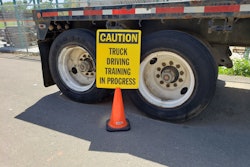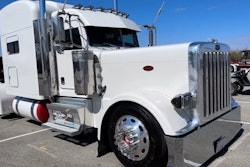The Biden Administration’s Department of Labor on Jan. 10 finalized a rule that rolls back a Trump-era rule offering guidance on determining employee or independent contractor classification under the Fair Labor Standards Act (FLSA).
The DOL’s new rule, which takes effect March 11, attempts to officially codify, for the first time, the standard that courts have been using for decades up until the Trump Administration’s rule was published in 2021.
[Related: New DOL rule on contractor/employee status under fair-labor law: The legal perspective]
As reported when the rule was published, the DOL’s new rule returns to a “totality-of-the-circumstances” analysis that courts have historically used when determining a worker’s classification. When classification cases arise for the purposes of determining applicability of minimum wage and overtime rules to a worker or class of workers, the analysis will employ six “economic reality” factors that are weighted equally to make the determination.
Greg Feary, president and managing partner of transportation law firm Scopelitis, said such a test is a “multi-factor balancing test” -- if more factors lean toward one classification over the other, that’s the result of the test. That’s considerably different from an "ABC test," as seen in California with its AB 5 law, where if you fail to meet any one of the three factors, the worker is an employee.

[Related: AB 5's latest: Why interstate trucking should be exempt]
The six factors laid out in the new DOL rule:
- Opportunity for profit or loss depending on managerial skill
- Investments by the worker and the potential employer
- Degree of permanence of the work relationship
- Nature and degree of control
- Extent to which the work performed is an integral part of the potential employer’s business
- Skill and initiative
The final rule includes extensive guidance explaining each of the six factors and how they should be applied, yet when it comes to the real world of trucking, does it change anything materially for independent contractor owner-operators leased to carriers? The answer's complicated, and starts with how owner-ops themselves view independence -- rather, what should rather than does characterize true independent contractor relationships.
[Related: 'Truckers are tired' of regs' shifting sands: DOL rolls back contractor-classification rule]
Owner perspectives: Nature/degree of control weighs heavy
Opinions from around the trucking business are varied. As reported when the rule was finalized, the Owner-Operator Independent Drivers Association said the long seesaw and patchwork of classification rules "has created uncertainty that makes it more difficult for [owner-operators] to operate their businesses.”
OOIDA President Todd Spencer added that any rule related to classification “must allow for owner-operator relationships to be examined on a case-by-case basis. This approach has historically allowed owner-operators to work as independent contractors and generally protected workers from misclassification.”
The American Trucking Associations came out in strong opposed to the rule, calling it “un-American,” implying the economic-realities test seriously threatened leased-owner/carrier relationships. The ATA underscored that trucking has used independent contractors since its very beginnings and contended the new rule is a “tangled mess that weakens our supply chain and undermines the livelihoods of hundreds of thousands of truckers across the country.”
Some owner-operators took things a step further. Independent William McKelvie questioned whether any leased owner-operator should ever be considered an independent contractors. “Is there truly an independent contractor without getting your own authority?” he asked. In his view, “to be honest, the answer is no.”
Adam Johnson, 2023 finalist in Overdrive's Small Fleet Championship as owner of Wisconsin-based K&D Transport, might beg to differ. K&D currently has four owner-operators leased to the fleet, with another 12 company drivers.
Johnson looks at the new classification rule and sees owner-operator/carrier relationship risks more narrowly -- though particularly high for fleets with predatory lease-purchase programs. His owners are safe, he feels. Not much will change for his fleet, which doesn’t offer any sort of lease-purchase, he said.
 K&D Transport owner Adam Johnson, shown here with his 2003 Kenworth W900L, leases on four owner-operators to go along with his 12 company drivers.
K&D Transport owner Adam Johnson, shown here with his 2003 Kenworth W900L, leases on four owner-operators to go along with his 12 company drivers.
“All of my employees that drive company trucks are W2, and the 1099 guys have their own trucks, buy their own fuel, license plates and insurance,” he said. “They signed on to haul our freight only, but they can pick and choose to take or deny freight. To me, that’s the definition” of an independent contractor.
[Related: K&D Transport: Third-gen flatbed business running show-quality KWs]
If a company is force-dispatching their leased operators and those drivers “don’t have the freedom to take their truck and leave, to me they’re considered a company driver.”
On the last point, owners Johnson and McKelvie are in agreement.
At once, McKelvie felt leasing arrangements in general terms were almost always limiting enough to suggest employee status. If you’re leased to a carrier at all, he contended, the carrier “can at any time say, ‘We’re going to do this and there’s nothing you can do about it.’ You have the option of quitting or doing as they demand. That’s not independent.”
McKelvie's past experience leasing to another carrier was a control nightmare. “They basically try to control your truck,” he said.
He referenced a dedicated run from Tennessee to New York under that past lease. “They told us the rate, where to pick up and where to deliver," he said. "And any type of negotiations money-wise, we didn’t have a chance." He added that during that time, not being able to negotiate his rates wasn't considered an issue. Since, though, he and a number of other operators are now thinking about the ability to negotiate rates (lack thereof) as an indicator of employee status.
To McKelvie, the ability to negotiate rates for yourself and run your business separately from the leasing carrier signifies an independent contractor relationship.
Adam Johnson's contracts with owner-operators at K&D “take 10% off the top to find the freight," he said. "If they have their own trailer, they get 90% of the load.” The owner-operators pay all their own fees -- plates, fuel, insurance, maintenance, tires, etc. If his leased owner-operators are using a K&D trailer, they get 80% of the load. Some companies, including K&D, help their leased owner-operators with discount programs through the company applicable to a variety of purchases, from fuel to insurance, increasing ties to the company that could weigh toward employee status.
Yet owners at K&D also "have the right to refuse a load or accept a load,” he added. “If they feel that the loads aren’t paying enough or they’re not making enough money, they can leave with their truck and sign somewhere else, or get their own authority.”
The latter is what McKelvie's done. He’s currently running power-only with his authority and “pulls for anybody that allows me to sign up to pull their loads," he said. "The beauty of this is they have no control over me. None whatsoever. None of their company rules apply to me.”
[Related: D.C. demonstrators get face-to-face with FMCSA administrator]
Control is also the biggest factor in determining contractor classification in the view of Jayme Anderson, an independent owner-operator and the director of carrier relations with the National Owner Operators Association. If an owner-operator is not force-dispatched and can pick and choose the loads he or she wants to take, that indicates that they’re a contractor, Anderson said.
“It’s the amount of control exerted over the operator that defines it,” he said. Or should define it. The control factor is but one of six in the economic realities contractor test DOL has finalized.
Anderson added he believes if an owner-operator leases onto another company, he/she “shouldn’t have to run under their policies or procedures," he said. That puts the owner out of "control of my own company -- they’re dictating what I do. I believe the only policies and procedures you should have to abide by are the rules and guidelines of the FMCSA and DOT.”
Carriers need to flip the prescriptive script too many take in controlling leased-on businesses, he suggested. Independent contractors need the freedom to choose just what they need from the carrier from the start of the relationship. “If you want to lease to my company, what do you need?" Anderson offered as example. "Do you want dispatch? Do you need compliance? What do you need to be successful and keep moving? Put that up to the driver to determine what he needs.”
The determination of services an owner-operator needs should fall to the contractor, he said.
An owner-operator running under the complete control of a “fleet manager or dispatcher," he added, who "dictates where they fuel, the routes they run," isn't independent "and should receive employee protections and benefits."
Read next: The legal perspective: DOL independent contractor rule's trucking impact
[Related: How much money are brokers really making from owner-operators' hauls?]












